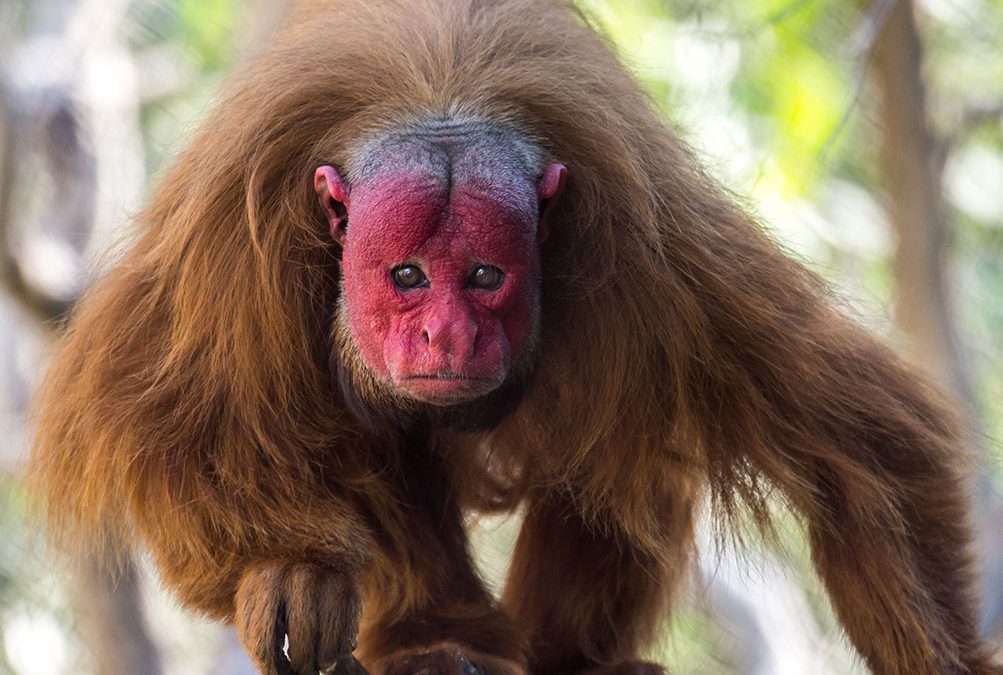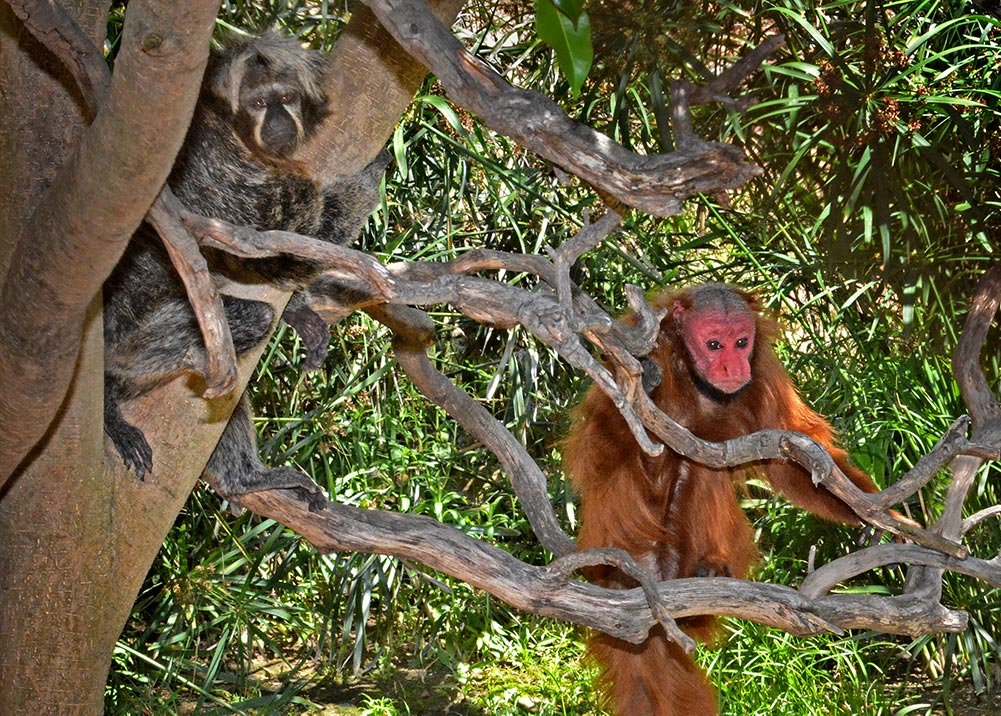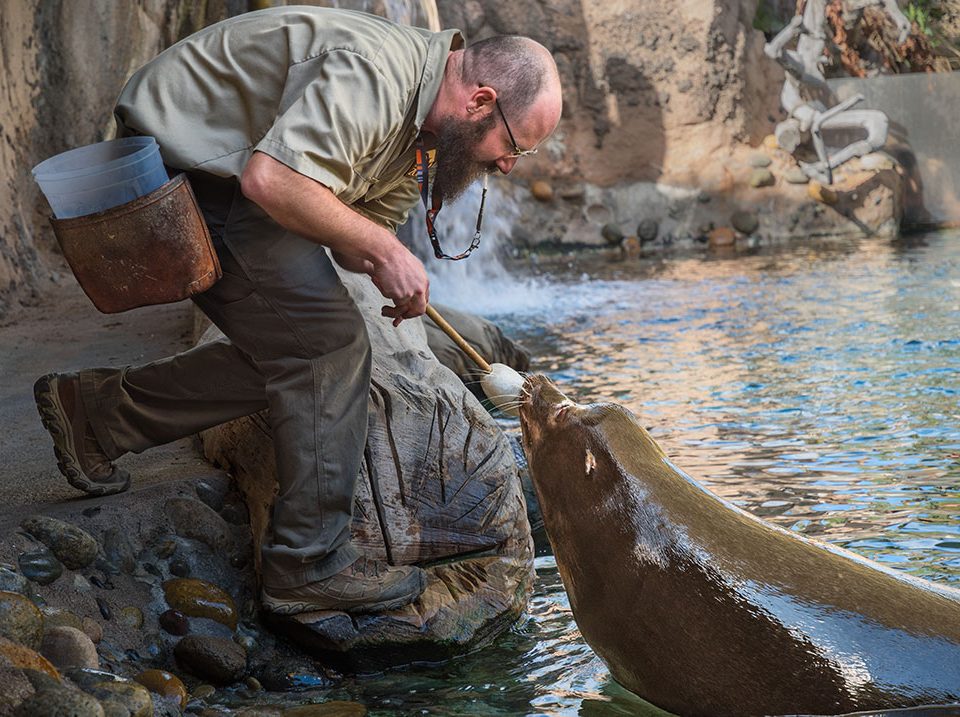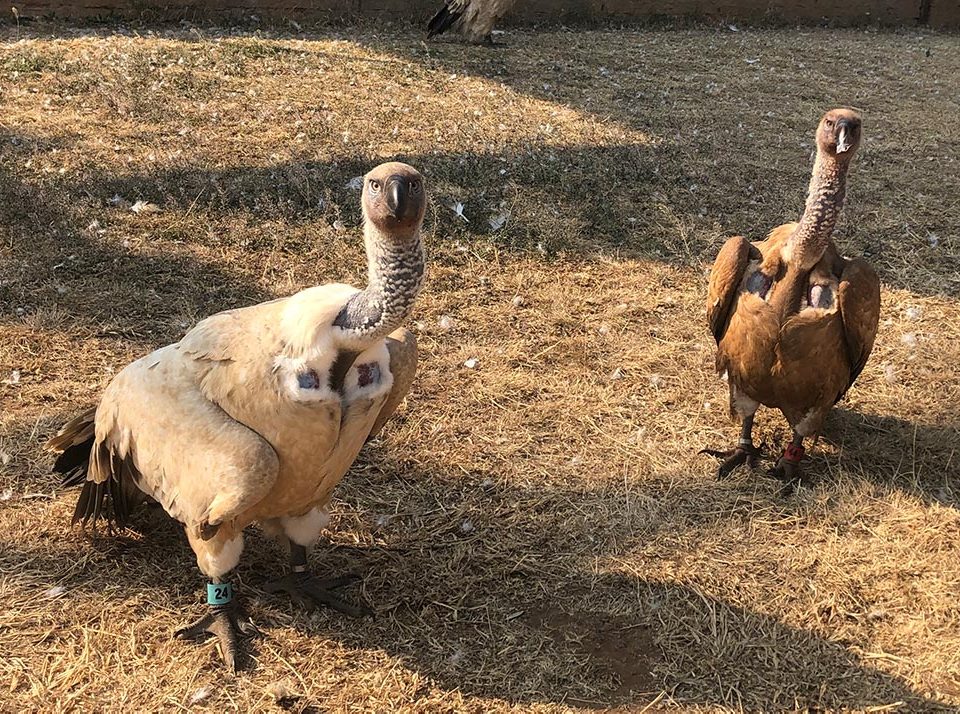Remembering Inti

What’s in a Name?
September 1, 2019
Keep Calm and Carrion
September 1, 2019
The Zoo's only male red uakari, Inti, endeared himself to his caretakers. Photo by Matt Carey
The Los Angeles Zoo began working with red uakari monkeys in the mid 1960s. Ours is currently the only zoological institution outside of Peru and Brazil (the uakari’s native range) that exhibits this species. These small monkeys are striking in appearance, covered in coarse, reddish-orange hair with heads that are mostly or completely bald, accenting their unique faces, which can range in hue from pale pink to scarlet. Unfortunately, this unique and vulnerable species is declining in the wild. Uakaris occupy only a small portion of the Amazon rainforest and their habitat is shrinking due to logging and deforestation.
In 2014, Senior Animal Keeper Dani Cremona received an Animal Keeper Advanced Studies Fund grant, with which she traveled to the Pilpintuwasi Rescue Center in Iquitos, Peru to assist in developing a training program using operant conditioning techniques with positive reinforcement to train the nine resident uakaris for voluntary blood draws so that they would not need to be sedated for the procedure. Cremona had been working with the Zoo’s three uakaris for almost ten years at that point, and she had a special connection with them, so it has been hard to say goodbye as they have aged and passed on—Cheyenna in 2017 and Inti in July.
“When you take care of an animal for 14 years, they become a special part of your life.”
Inti had been under treatment for congestive heart failure, a chronic condition (and one that also occurs in humans) in which the heart doesn't pump blood as efficiently it should. He was estimated to be 39 years old—well over the 30-year life expectancy in human care.
“The red uakari are one of the most unique animal species I’ve ever worked with,” comments Cremona. “Inti was our only male uakari here at the Zoo. He had a special role in watching over his small troop of females—me included! I’ve been privileged to share information about this species with Zoo visitors and to help with conservation efforts in Peru. When you take care of an animal for 14 years, they become a special part of your life. He will be missed dearly!” Animal Keeper Debbie Dadomo, part of the team that cares for the uakaris, adds, "I had the privilege of taking care of Inti for a relatively short amount of time, but he left an imprint on my heart." For companionship, female saki monkey Beatrice has moved in with the remaining female uakari, Daisy.






